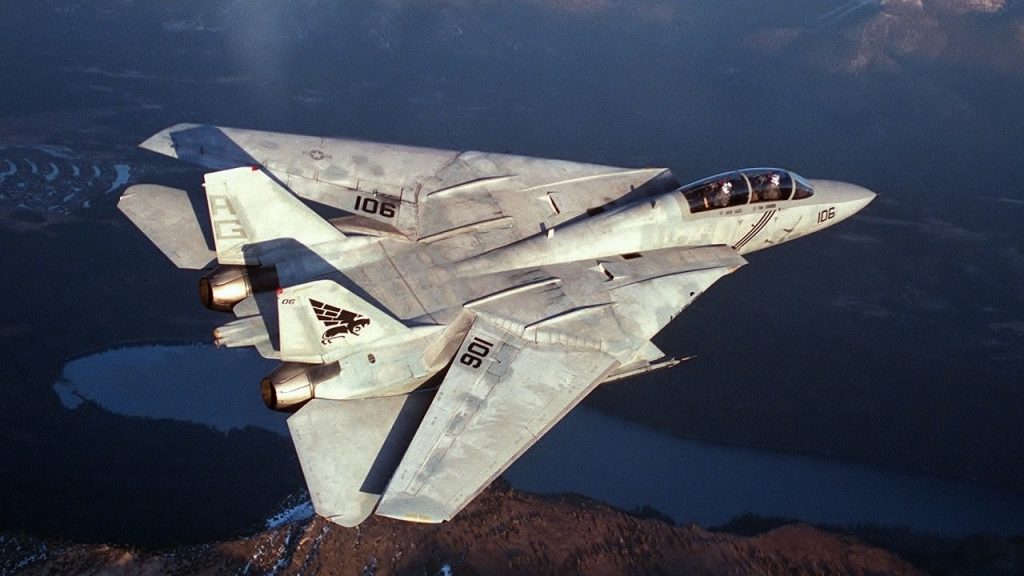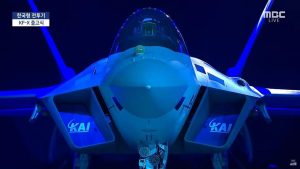The F-14 Bombcat flew missions against Yugoslavia in 1999 and later over Afghanistan and Iraq in the 2000s.

Meet the F-14 Bombcat: Developed in the 1960s to incorporate the air combat experience learned during the Vietnam War, the Grumman F-14 Tomcat proved itself as a multi-role fighter. As the first of the American “Teen Series” of fighters that included the F-15 Eagle, F-16 Fighting Falcon, and F/A-18 Hornet, the F-14 Tomcat more than lived up to the role it was designed for – and it even became a de facto bomber.
The F-14 supersonic, twin-engine variable-sweep wing, two-seat fighter was designed to engage enemy aircraft in all weather conditions and at night. The Tomcat was also designed to track up to 24 targets simultaneously and featured an advanced weapons system that included a powerful Hughes AWG-9 radar, which was used in conjunction with the Phoenix AIM-54A missiles. It could successfully pick out and destroy a chosen target from a formation at a distance of over 100 miles. Additional armaments include a variety of other intercept missiles, rockets, bombs, and an internal M61A1 Vulcan 20mm Gatling-style rotary cannon.
Its AIM-54 missiles provided defense against bombers carrying standoff missiles, while it was a true dogfighter. After two decades in service, however, the F-14 was employed as a strike aircraft – filling the role of the U. S. Navy’s A-6 Intruders after those aircraft were retired from service until the new F/A-18E/F Super Hornets arrived on the scene. Though it was a stopgap, the rationale was actually well-founded, as the F-14 was able to carry more ordnance than the F/A-18A/C Hornet.
Another factor was the dissolution of the Soviet Union, which left the F-14 Tomcat without a peer-level enemy to fight. The Navy – in fact, the whole U. S. Department of Defense (DoD) – had to justify why it needed expensive platforms like the F-14. Using it as a bomber was thus a sound decision, as the Tomcat airframes still had plenty of hours. Moreover, when it was being designed, Grumman had even shown a prototype carrying bombs, while flight tests were even carried out with a rack of 14 Mark 82 bombs.
However, in practice with laser-guided bombs, the Tomcat needed some assistance. When the F-14 took part in the first bombing mission in the skies over Bosnia in September 1995’s Operation Deliberate Force, the Tomcats were accompanied by Hornets that provided the lasing of the targets. The two aircraft operated so well together that it seemed to be a good synergy, especially as the F-14s could land with an entire heavy load of laser-guided munitions if they weren’t used in combat – whereas the F/A-18 Hornets had to jettison them to meet the weight requirement to land.
Eventually, the fighters were fitted with a version of Lockheed Martin’s Low Altitude Navigation and Targeting Infrared for Night (LANTRIN) targeting pod. An F-14 fitted with LANTRIN could paint targets with a laser beam day or night, then drop laser-guided bombs to demolish the target. Integration was complete by 1996, mating F-14B airframes with the pod to make the “Bombcat.”
The system saw its first operational use in Kosovo in 1999.
Though it could be argued it gave the Tomcat additional service life, it was still short-lived. The Bombcats flew missions against Yugoslavia in 1999 and later over Afghanistan and Iraq in the 2000s, the U. S. Navy retired the last F-14 from service in 2006.





